|
Size: 45948
Comment:
|
Size: 48344
Comment: no xrange
|
| Deletions are marked like this. | Additions are marked like this. |
| Line 115: | Line 115: |
| else: print 'NaN' | else: print('NaN') |
| Line 140: | Line 140: |
| if start < 1 or end <=start: print "invalid start or end value" if n > end: print "WARNING: n is larger than the end value" |
if start < 1 or end <=start: print("invalid start or end value") if n > end: print("WARNING: n is larger than the end value") |
| Line 172: | Line 172: |
| #print x_cord, y_cord | |
| Line 183: | Line 182: |
| #print x, "=x y=", y, " num =", num | |
| Line 209: | Line 207: |
| print '(to go from x,y coords to an n, reset by setting n=0)' | print('(to go from x,y coords to an n, reset by setting n=0)') |
| Line 211: | Line 209: |
| #print 'if n =', n, 'then (x,y) =', (x_cord, y_cord) print '(x,y) =', (x_cord, y_cord), '<=> n =', find_n(x_cord, y_cord, start) print ' ' print "SW/NE line" if -y_cord<x_cord: print '4*t^2 + 2*t +', -x_cord+y_cord+start else: print '4*t^2 + 2*t +', +x_cord-y_cord+start print "NW/SE line" if x_cord<y_cord: print '4*t^2 +', -x_cord-y_cord+start else: print '4*t^2 + 4*t +', +x_cord+y_cord+start |
print('(x,y) =', (x_cord, y_cord), '<=> n =', find_n(x_cord, y_cord, start)) print(' ') print("SW/NE line") if -y_cord<x_cord: print('4*t^2 + 2*t +', -x_cord+y_cord+start) else: print('4*t^2 + 2*t +', +x_cord-y_cord+start) print("NW/SE line") if x_cord<y_cord: print('4*t^2 +', -x_cord-y_cord+start) else: print('4*t^2 + 4*t +', +x_cord+y_cord+start) |
| Line 239: | Line 236: |
| if start < 1 or end <=start: print "invalid start or end value" if n > end: print "WARNING: n is greater than end value" |
if start < 1 or end <=start: print("invalid start or end value") if n > end: print("WARNING: n is greater than end value") |
| Line 262: | Line 259: |
| print 'n =', factor(n) | print('n = {}'.format(factor(n))) |
| Line 284: | Line 281: |
| print 'Pink Curve: n^2 +', c print 'Green Curve: n^2 + n +', c2 |
print('Pink Curve: n^2 +', c) print('Green Curve: n^2 + n +', c2) |
| Line 312: | Line 309: |
| print M; print '\n'*3 print "Computing basis...\n\n" |
print(M) print('\n' * 3) print("Computing basis...\n\n") |
| Line 315: | Line 313: |
| print "Space has dimension 0" | print("Space has dimension 0") |
| Line 317: | Line 315: |
| prec = max(prec, M.dimension()+1) | prec = max(prec, M.dimension() + 1) |
| Line 320: | Line 318: |
| print "\n\n\nDone computing basis." | print("\n\n\nDone computing basis.") |
| Line 333: | Line 331: |
| print A.cuspidal_subgroup() | print(A.cuspidal_subgroup()) |
| Line 754: | Line 752: |
| print "p = %s"%p show(E.change_ring(GF(p)).plot(),xmin=0,ymin=0) |
print("p = %s" % p) show(E.change_ring(GF(p)).plot(), xmin=0, ymin=0) |
| Line 817: | Line 815: |
| c = list(continued_fraction(RealField(prec)(number))); print c | c = list(continued_fraction(RealField(prec)(number))); print(c) |
| Line 846: | Line 844: |
| L = [[-0.5, 2.0^(x/100.0) - 1 + sqrt(3.0)/2] for x in xrange(1000, -1, -1)] R = [[0.5, 2.0^(x/100.0) - 1 + sqrt(3.0)/2] for x in xrange(1000)] xes = [x/1000.0 for x in xrange(-500,501,1)] |
L = [[-0.5, 2.0^(x/100.0) - 1 + sqrt(3.0)/2] for x in range(1000, -1, -1)] R = [[0.5, 2.0^(x/100.0) - 1 + sqrt(3.0)/2] for x in range(1000)] xes = [x/1000.0 for x in range(-500,501,1)] |
| Line 872: | Line 870: |
| = Multiple Zeta Values = | = Multiple Zeta Values = |
| Line 874: | Line 872: |
| == Computing Multiple Zeta values == | == Computing Multiple Zeta values == |
| Line 879: | Line 877: |
| def _( weight=(5,(2..20))): | def _( weight=(5,(2..100))): |
| Line 932: | Line 930: |
| print zeta(a) | u=zeta(a) RIF=RealIntervalField(int(3.321928*D)) u=u/1 print(u) |
| Line 939: | Line 940: |
| def _( Depth=(5,(2..20))): | def _( Depth=(5,(2..100))): |
| Line 998: | Line 999: |
print zeta(a) |
u=zeta(a) RIF=RealIntervalField(int(3.321928*D)) u=u/1 print(u) |
| Line 1002: | Line 1005: |
| == Program to Compute Integer Relation between Multiple Zeta Values == {{{#!sagecell from mpmath import * print("Enter the number of composition") @interact def _( n=(5,(2..100))): a=[] for i in range(n): a.append([i+2,1]) print("In each box Enter composition as an array") @interact def _(v=('Compositions', input_box( default=a, to_value=lambda x: vector(flatten(x)))), accuracy=(100..100000)): D=accuracy R=RealField(10) a=v def comptobin(a): word=[] for i in range(len(a)): word=word+[0]*(a[i]-1)+[1] return(word) DD=int(D)+int(R(log(3.321928*D))/R(log(10)))+4 RIF=RealIntervalField(DD) mp.dps=DD def Li(word): n=int(DD*log(10)/log(2))+1 B=[] L=[] S=[] count=-1 k=len(word) for i in range(k): B.append(mpf('0')) L.append(mpf('0')) if(word[i]==1 and i<k-1): S.append(mpf('0')) count=count+1 T=mpf('1') for m in range(n): T=T/2 B[k-1]=mpf('1')/(m+1) j=count for i in range(k-2,-1,-1): if(word[i]==0): B[i]=B[i+1]/(m+1) elif(word[i]==1): B[i]=S[j]/(m+1) S[j]=S[j]+B[i+1] j=j-1 L[i]=T*B[i]+L[i] L[k-1]=T*B[k-1]+L[k-1] return(L) def dual(a): b=list() b=a b=b[::-1] for i in range(len(b)): b[i]=1-b[i] return(b) def zeta(a): b=dual(a) l1=Li(a)+[1] l2=Li(b)+[1] Z=mpf('0') for i in range(len(l1)): Z=Z+l1[i]*l2[len(a)-i] return(Z) zet=[] for i in range(n): zet.append((zeta(comptobin(a[i])))) mp.dps=D for i in range(n): zet[i]=zet[i]/1 print("zeta(", a[i], ")=", zet[i]) u=pslq(zet,tol=10**-D,maxcoeff=100,maxsteps=10000) print("the Intger Relation between the above zeta values given by the vector") print(u) }}} {{attachment:akhi10.png}} |
|
| Line 1006: | Line 1086: |
| def _( weight=(7,(2..30))): | def _( weight=(7,(2..100))): |
| Line 1023: | Line 1103: |
| print "Composition is ",bintocomp(a) | print("Composition is {}".format(bintocomp(a))) |
| Line 1030: | Line 1110: |
| def _( Depth=(7,(1..30))): | def _( Depth=(7,(1..100))): |
| Line 1044: | Line 1124: |
| print "Word is ",comptobin(a) | print("Word is {}".format(comptobin(a))) |
| Line 1051: | Line 1131: |
| def _( weight=(7,(2..30))): | def _( weight=(7,(2..100))): |
| Line 1066: | Line 1146: |
| print "Dual word is ",dual(a) | print("Dual word is {}"?format(dual(a))) |
| Line 1075: | Line 1155: |
| def _( w1=(2,(2..20)), w2=(2,(2..20))): | def _( w1=(2,(2..100)), w2=(2,(2..100))): |
| Line 1153: | Line 1233: |
| print c[1][i],"*",c[0][i] ,"+ ", print c[1][len(c[0])-1],"*",c[0][len(c[0])-1] |
print(c[1][i],"*",c[0][i] ,"+ ") print(c[1][len(c[0])-1],"*",c[0][len(c[0])-1]) |
| Line 1162: | Line 1242: |
| def _( w=(2,(2..20))): | def _( w=(2,(2..100))): |
| Line 1302: | Line 1382: |
| c=Regshuf0(a) | c = Regshuf0(a) |
| Line 1305: | Line 1385: |
| print c[1][i],"*",c[0][i] ,"+ ", | print(c[1][i],"*",c[0][i] ,"+ ") |
| Line 1307: | Line 1387: |
| print c[1][len(c[0])-1],"*",c[0][len(c[0])-1] | print(c[1][len(c[0])-1],"*",c[0][len(c[0])-1]) |
| Line 1455: | Line 1535: |
| c=Regshuf1(a) | c = Regshuf1(a) |
| Line 1458: | Line 1538: |
| print c[1][i],"*",c[0][i] ,"+ ", | print(c[1][i],"*",c[0][i] ,"+ ") |
| Line 1460: | Line 1540: |
| print c[1][len(c[0])-1],"*",c[0][len(c[0])-1] | print(c[1][len(c[0])-1],"*",c[0][len(c[0])-1]) |
Contents
Integer Factorization
Divisibility Poset
by William Stein
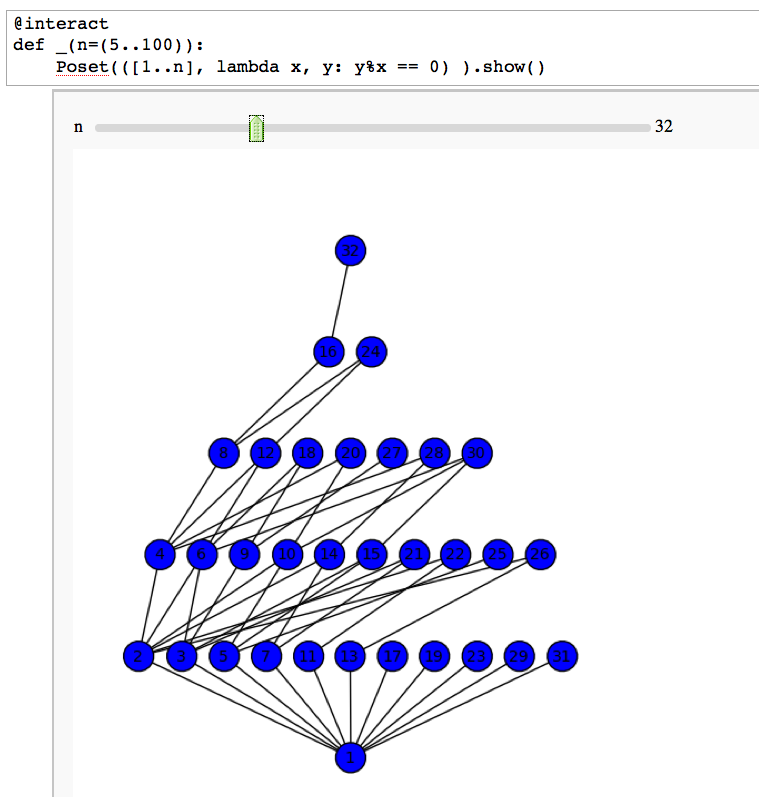
Factor Trees
by William Stein
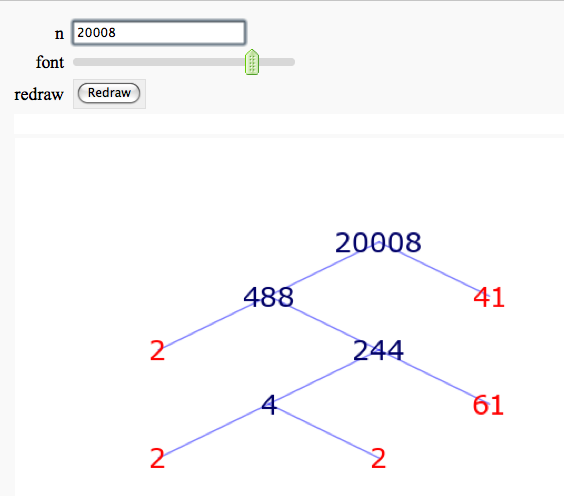
More complicated demonstration using Mathematica: http://demonstrations.wolfram.com/FactorTrees/
Factoring an Integer
by Timothy Clemans
Sage implementation of the Mathematica demonstration of the same name. http://demonstrations.wolfram.com/FactoringAnInteger/
Prime Numbers
Illustrating the prime number theorem
by William Stein
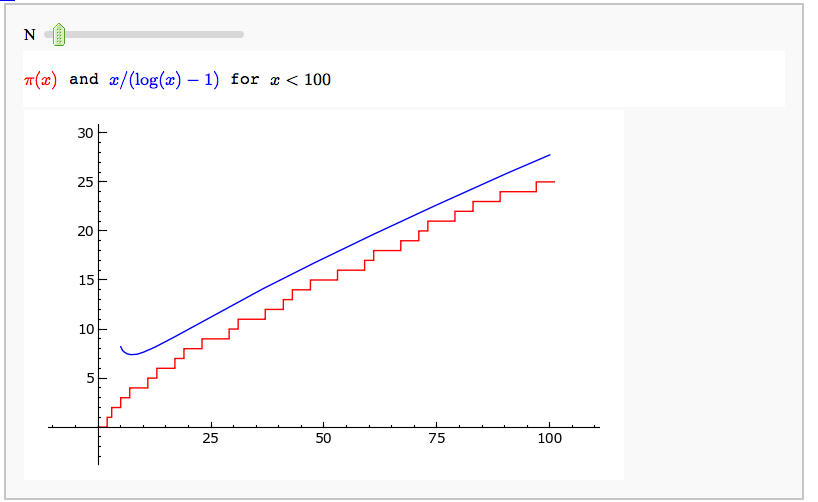
Prime Spiral - Square FIXME
by David Runde
Prime Spiral - Polar
by David Runde
Modular Forms
Computing modular forms
by William Stein
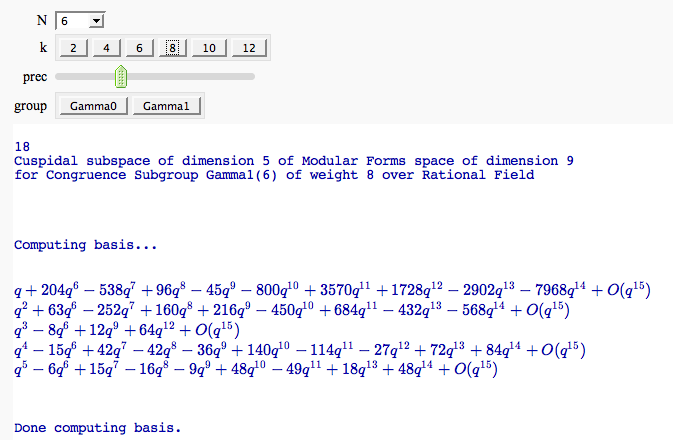
Computing the cuspidal subgroup
by William Stein
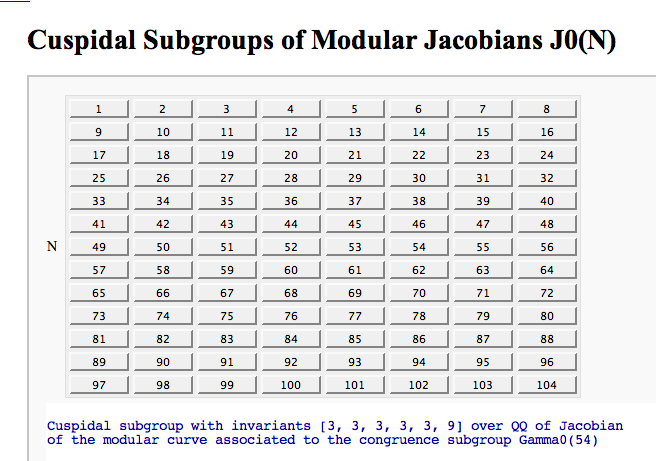
A Charpoly and Hecke Operator Graph
by William Stein
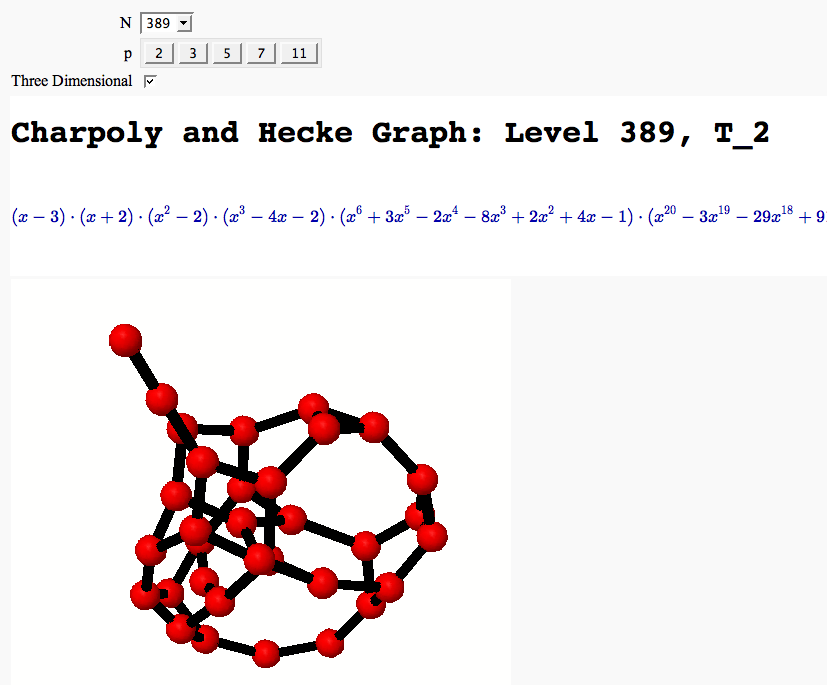
Modular Arithmetic
Quadratic Residue Table FIXME
by Emily Kirkman
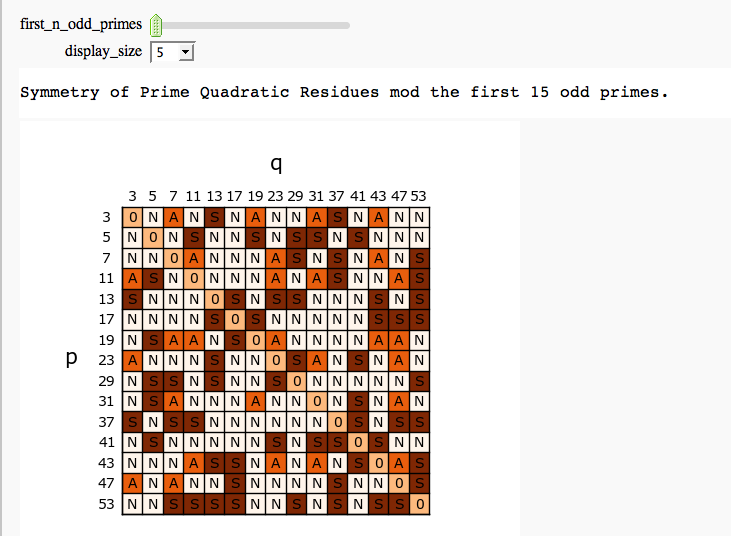
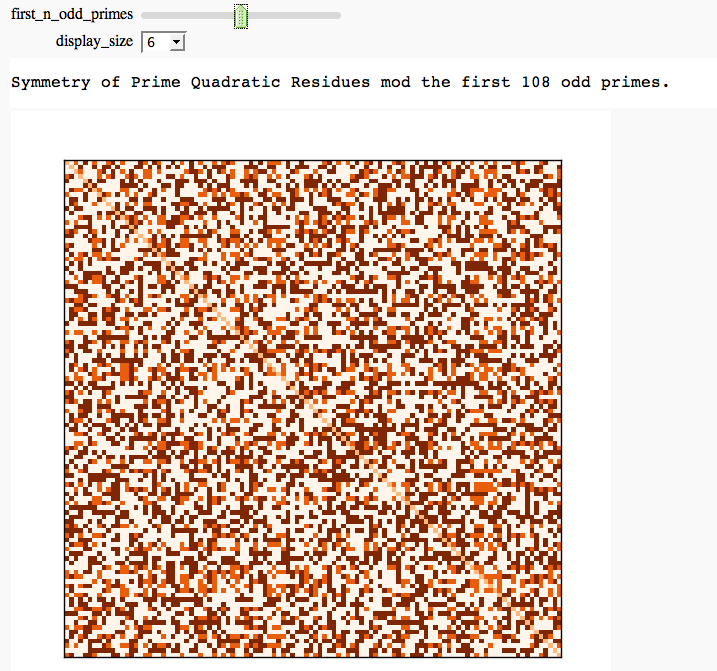
Cubic Residue Table FIXME
by Emily Kirkman
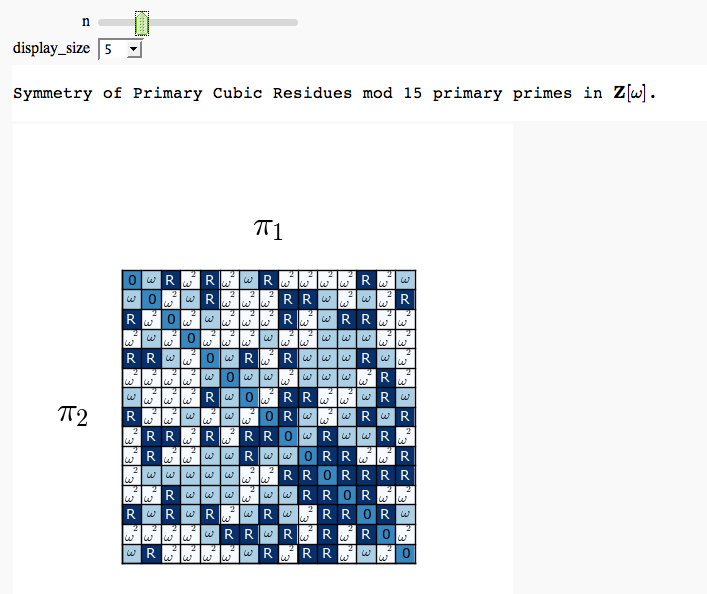
Cyclotomic Fields
Gauss and Jacobi Sums in Complex Plane
by Emily Kirkman
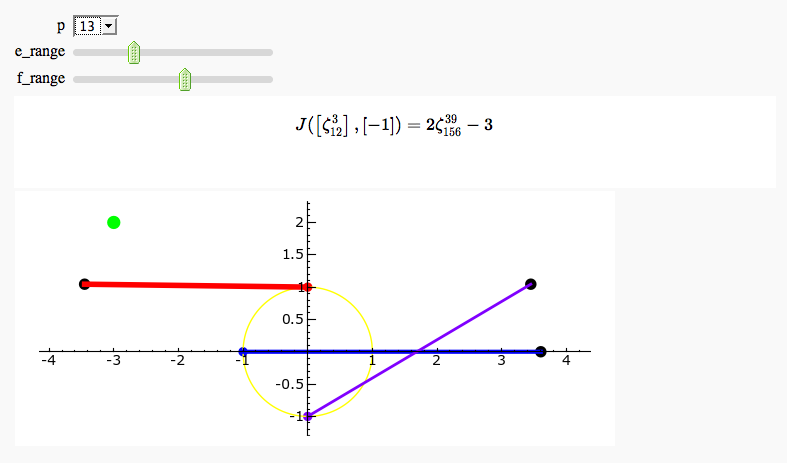
Exhaustive Jacobi Plotter
by Emily Kirkman
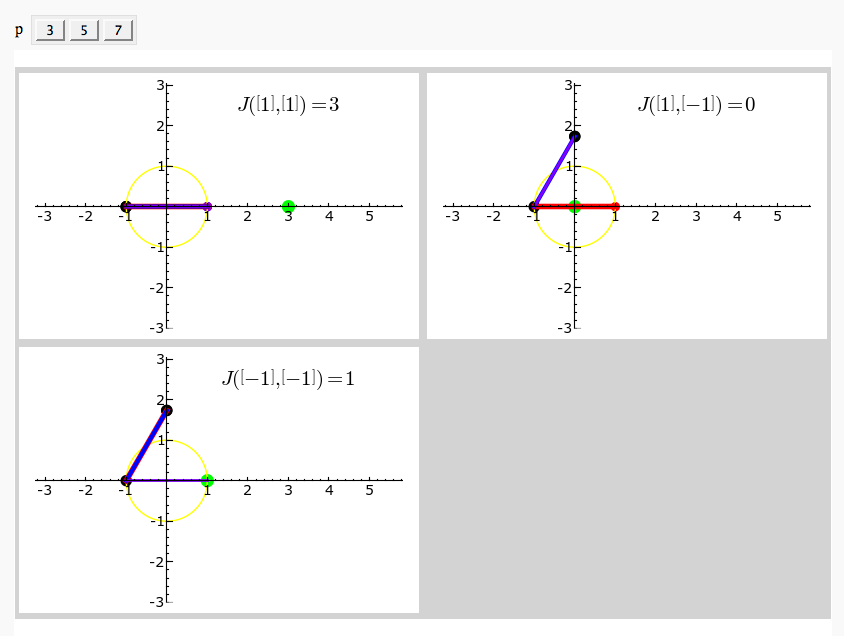
Elliptic Curves
Adding points on an elliptic curve
by David Møller Hansen
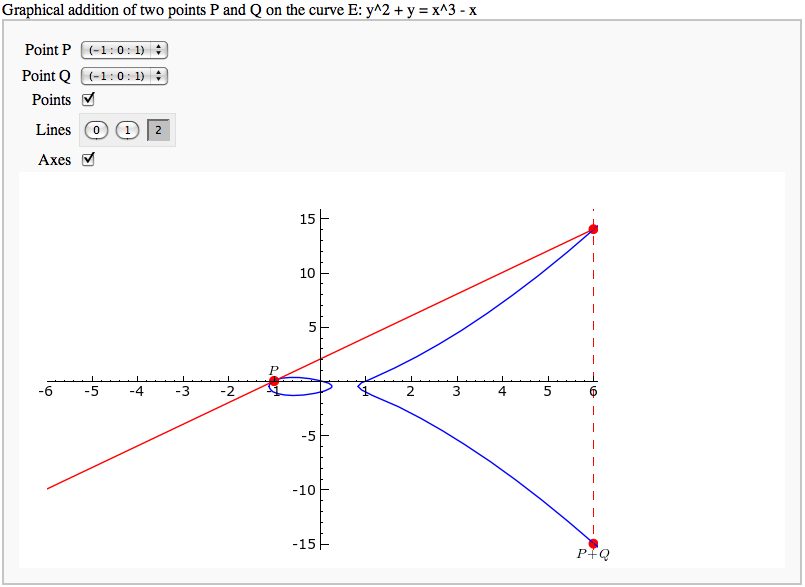
Plotting an elliptic curve over a finite field
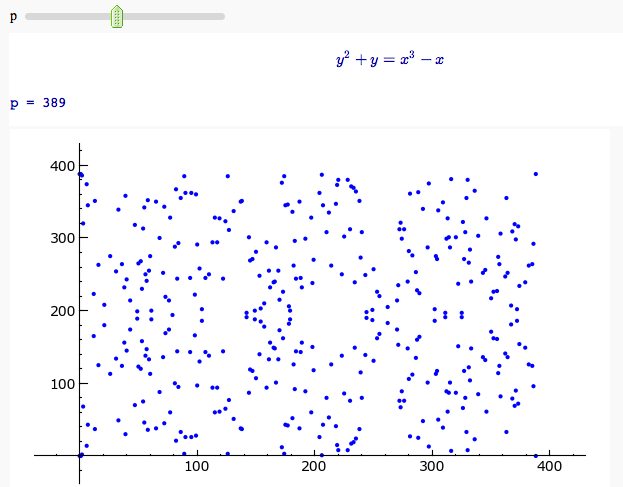
Cryptography
The Diffie-Hellman Key Exchange Protocol
by Timothy Clemans and William Stein
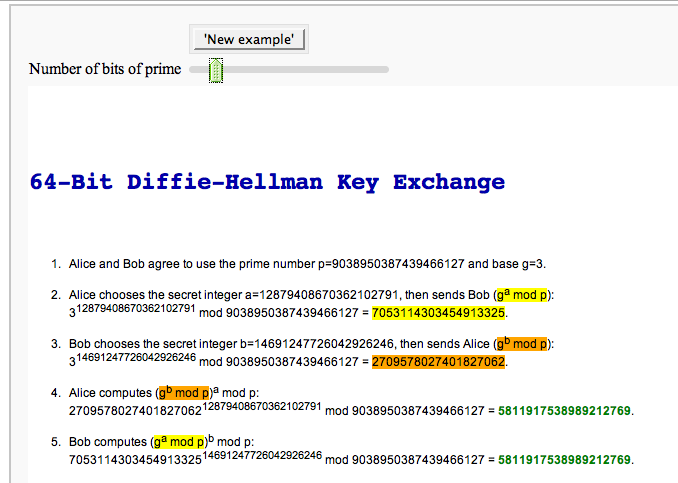
Other
Continued Fraction Plotter
by William Stein
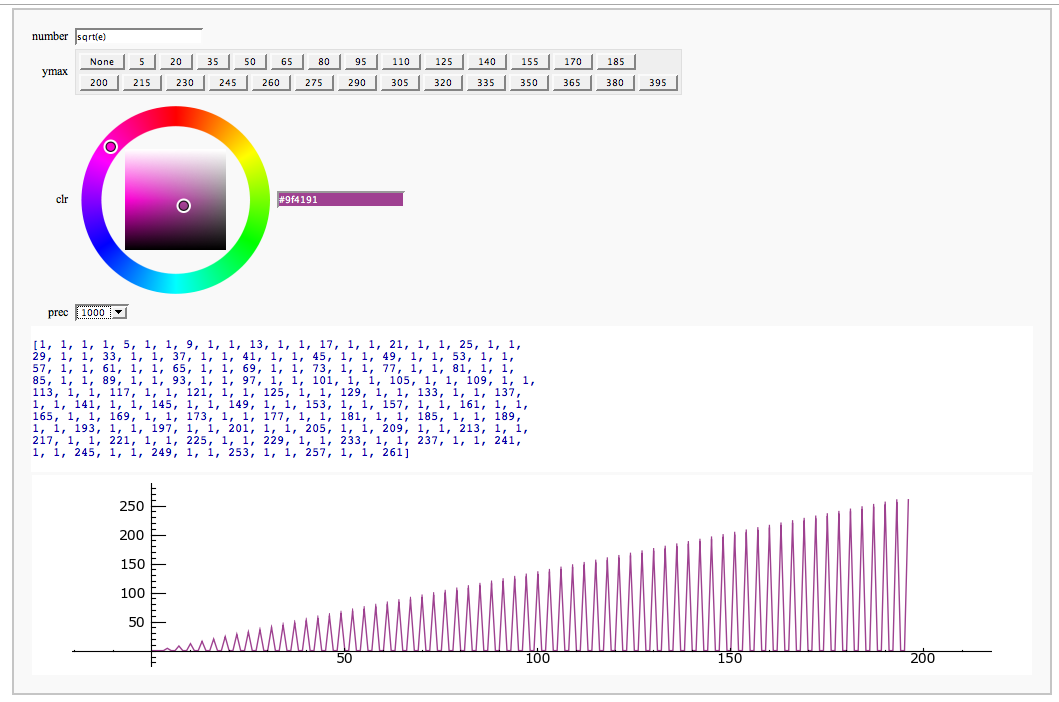
Computing Generalized Bernoulli Numbers
by William Stein (Sage-2.10.3)
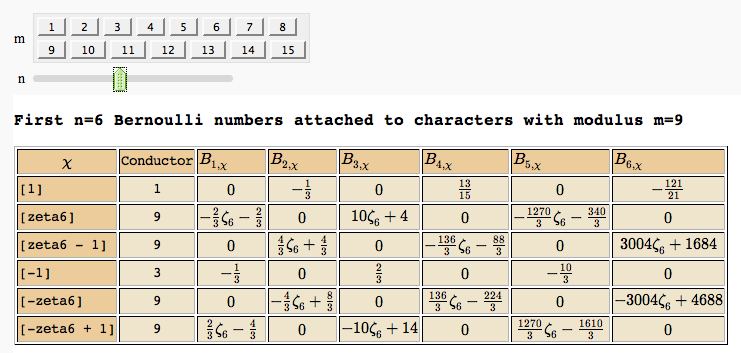
Fundamental Domains of SL_2(ZZ)
by Robert Miller
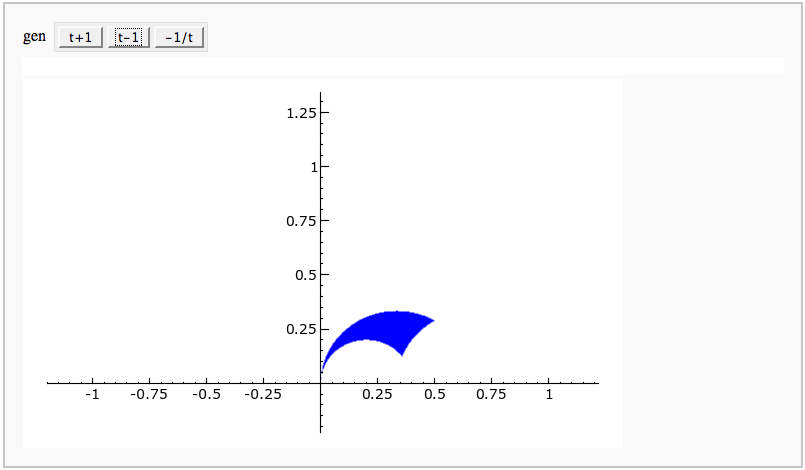
Multiple Zeta Values
by Akhilesh P.
Computing Multiple Zeta values
Word Input

Composition Input

Program to Compute Integer Relation between Multiple Zeta Values

Word to composition

Composition to Word

Dual of a Word

Shuffle product of two Words

Shuffle Regularization at 0

Shuffle Regularization at 1

